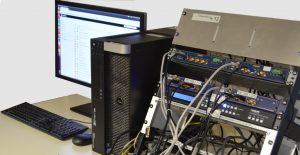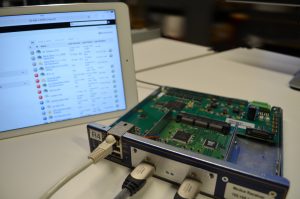For our test driven way of development we build up a regression test system for our high performance video and audio transmission. The system is used to schedule and run tests and monitor the results in real time. For this, it provides a wide range of interfaces to interact with the system under test. This includes interfaces to monitor and manipulate the network traffic as well as interfaces to generate and analyse video and audio signals.

The system is based on a Linux OS and can therefore be used on many different hardware platforms. The tests to be run are written in Python and can be run automatically or manually. An interface to Jenkins allows to combine the test system with the build flow.
The regression test system provides following advantages:
– Improved quality due to regression testing
– Automation of the testing process
– Simplification of the test implementation
– Individual adaptions depending on the test dependencies
Improved quality due to regression testing
With regression tests is the system tested with a large number of test cases. Some of the cases are based on the expected behavior of the system. Some cases are based on reports from customers and partners. Before a new software is released it has to pass all this test cases. Like this, each release provides at least as good as the last one and the software will continuously improve with each release.

Automation of the testing process
The InES regression test system provides an interface to Jenkins. This allows to include the tests directly into the build flow. The newest software can be built and downloaded to the target system. Which is then tested with all the regression test cases. The Jenkins web interface allows the user always to see the current progress as well as to change or interrupt some steps if required.
Simplification of the test implementation
The InES regression test systems provides the required interfaces to the device under test as well as the tools to schedule and execute the tests. The user just has to describe the test cases in Python. The test system can be set up on a PC or embedded system. It is also possible to split the test system over multiple platforms.
Individual adaptions depending on the test dependencies
The regression test system is built up modular. It’s possible to deactivate unused interfaces to reduce the requirements for the platform. It is also possible to add new interfaces specifically adapted to the device under test. Like this, it’s possible to adapt the test system perfectly to the device under test as well as to the platform it runs on.
Nice post. Thank you for sharing.